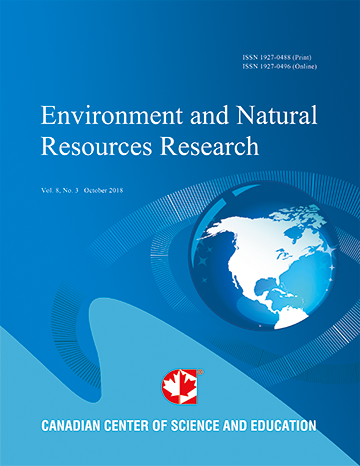Characterization of Water Source Types and Uses in Kirisia Forest Watershed, Samburu County, Kenya
- John Warui Kiringe
- Francis Mwaura
- Fiesta Warinwa
Abstract
Kenya’s dry-land water catchments are valued for their water provision services but their conservation is given little attention. This study was carried out between October and December 2015 and documented water source types and uses by humans and livestock in Kirisia Forest watershed. Different water source types exist in the watershed including earth dams, water pans, shallow wells, boreholes, springs and streams. The estimated population of livestock and locals using these sources was 180,645 and 147, 060 respectively. Earth dams and water pans provided water to the highest population of community members estimated at 11,564 people followed by boreholes at 9,886 people while streams, springs and shallow wells were used by the least number of people. They also provided water to the highest number of livestock estimated at an average of 15,422 animals. The highest amount of water was abstracted from boreholes at nearly 197,720Litres/day (197.72m3/day) followed by earth dams and water pans at 91,960Litres/day (91.96m3/day), and the least was from shallow wells, springs and streams at about 38,000Litres/day (38m3/day). Daily water abstraction from all the water source types by humans and livestock was nearly 366,540Litres/day or 366.54m3/day. Twenty three sub-locations rely on water from the watershed and based on the 2009 population census, their projected water demand was approximately 182,238,520Litres/day (182,238.52 m3/day). Water demand by livestock was estimated at 12,172,600Litres/day (12,172.60m3/day) based on the 2013 population data. Overall water demand by humans and livestock in all the sub-locations was estimated at 194,411,120Litres/day (194,411.12 m3/day); and these findings demonstrate the critical role played by the watershed in sustaining locals livelihoods and pastoralism.
- Full Text:
 PDF
PDF
- DOI:10.5539/enrr.v6n3p77
Journal Metrics
Google-based Impact Factor (2016): 6.22
h-index (November 2017): 12
i10-index (November 2017): 19
h5-index (November 2017): 11
h5-median (November 2017): 12
Index
Contact
- Emily LinEditorial Assistant
- enrr@ccsenet.org
